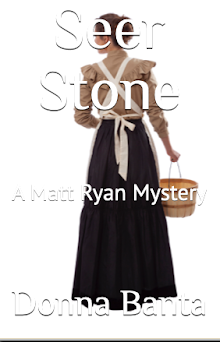To: Abbottsville Fourth Ward
From: Former Stake President Stan Taylor
Subject: Agnes Coolbrith
During my years as director of the LDS Institute at Grafton College, I taught church history according to the manual. Unfortunately the curriculum forced me to leave out some of the most fascinating figures of our past. For example, Agnes Coolbrith.
Agnes Moulton Coolbrith was born on July 9, 1808 in Scarborough, Cumberland, Maine. At the age of twenty-three she moved to Boston, where she and several female friends converted to Mormonism. Soon after she departed for Kirtland, Ohio to join others in her new-found faith. It was there that she met Don Carlos Smith, the younger brother of the prophet, Joseph. They fell in love and were married on July 30, 1835.
Their turbulent six year marriage was set against the backdrop of early Mormon history. The couple moved three times, from Ohio, to Missouri, to Illinois. Meanwhile, Don served missions throughout Pennsylvania, Ohio, Tennessee and Virginia. During one of his absences an angry mob turned Agnes out of their house, looted it, then burned it to the ground. In the midst of this upheaval, Don and Agnes conceived three daughters. The youngest, Josephine Donna Smith, came to be called Ina.
A devoted husband and father, Don Carlos disapproved of Joseph’s doctrine of plural marriage, and voiced opposition early on. However, witnesses claimed that on his deathbed, Don asked Joseph to take Agnes as a plural wife. Years later, Agnes denied this story. Nevertheless, after Don Carlos suddenly died in 1841, Agnes became a “spirit wife” to Joseph Smith, an act that estranged her from her beloved sister-in-law (and now sister wife) Emma Smith. Another tragedy soon followed, when in October of 1843, her oldest daughter, Sophronia, died of scarlet fever.
After Joseph Smith’s death in 1844, Agnes entered into a second polygamous marriage, this time with Don and Joseph’s cousin, George Albert Smith. Any animosity Agnes harbored toward polygamy was exacerbated during this period, as her relationship with George Albert turned cold. When he left Illinois to travel west with the Saints, Agnes made no attempt to travel with him, nor did he provide any provisions for her to follow. Years later, in a letter to her cousin, Joseph F. Smith, Ina wrote, “I think I see myself vowing to love and honor some old driveling idiot of sixty, to be taken into his harem and enjoy the pleasure of being his favorite Sultana for an hour, and then thrown aside.” Her opinion was most likely based on her mother’s experience.
It wasn’t long before Agnes abandoned her “spirit marriage” to George Albert for a legal union with William Pickett, a lapsed Mormon whose drinking problem overshadowed his intelligence. They settled in St. Louis, where Agnes gave birth to twin sons. Then in 1849, her domesticity was again interrupted when her husband became swept up in “gold fever.” William travelled to California, then asked Agnes to join him. Over time, she grudgingly agreed, only to leave him to his drink some years later. However, in 1852, she found herself crossing the dry Nevada desert with her family in a company of seventeen covered wagons.
After fording the Truckee River, they came upon the explorer, Jim Beckwourth, half dead with fever. The women in the company nursed him to health. In return he led them across his newly discovered trail over the Sierras, what is now known as the Beckwourth Pass. At Beckwourth’s invitation, Agnes agreed to let eleven-year-old Ina ride with him, and be the first child to cross the trail. When they reached the summit, Beckwourth dismounted, lifted the girl from the horse, took in the golden sun dappled valley, and declared, “There, little girl, there is California! There is your kingdom!”
From here the story belongs to Ina Donna Smith, the girl who grew up to be Ina Coolbrith, California’s first poet laureate, mentor to Jack London and Isadora Duncan, and member of the literary circle that included Mark Twain, Joaquin Miller, John Muir, Ambrose Bierce and Bret Harte. The woman who left her imprint on California history and American letters.
Church historians are eager to point out that Ina was a Mormon, and the niece of the prophet. I dislike this boastful claim. It seems disingenuous for a church to take credit for the success of its members, particularly in the case of Ina, who left her faith as a child. In my mind, Ina was not Joseph Smith's niece. Rather, she was Agnes Coolbrith's daughter.
A few weeks ago I hiked up San Francisco's Nob Hill to the corner of Taylor and Vallejo, the site of Ina Coolbrith Park. It’s flower laden path snaked down terraces high above the city. There was no noise, save for an occasional clang of a cable car. There in the quiet I took in Ina’s Kingdom: the city’s financial district, and beyond it, the bay, busy with sail boats, tugs, and massive container vessels. I wandered the park for the better part of an hour, staying even after the fog billowed in from the ocean. I thought of Agnes, whose journey began in Maine and ended at California’s Golden Gate. The spirit of her memory kept me warm.
If you would like to stop receiving these e-mails, we'll schedule you for nightly phone calls during the dinner hour.
Friday, October 16, 2009
Subscribe to:
Post Comments (Atom)














No comments:
Post a Comment